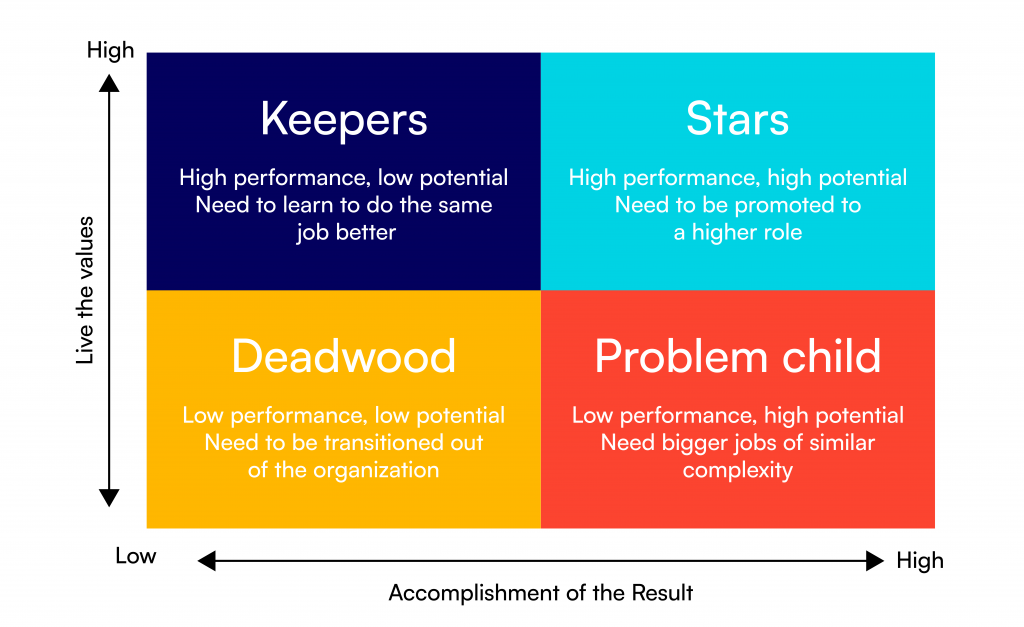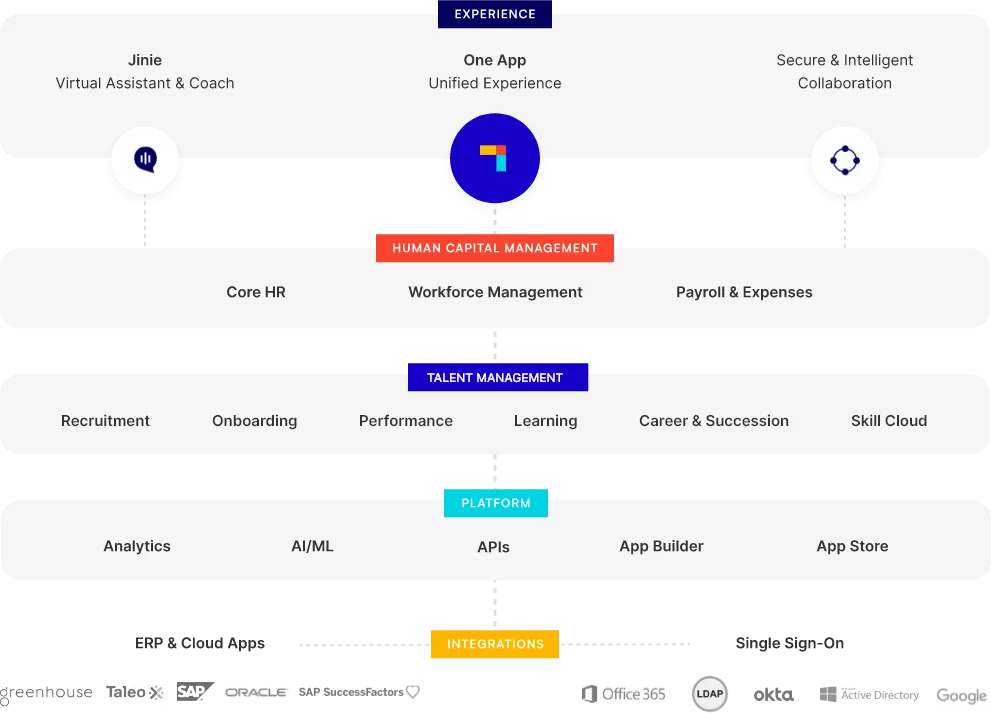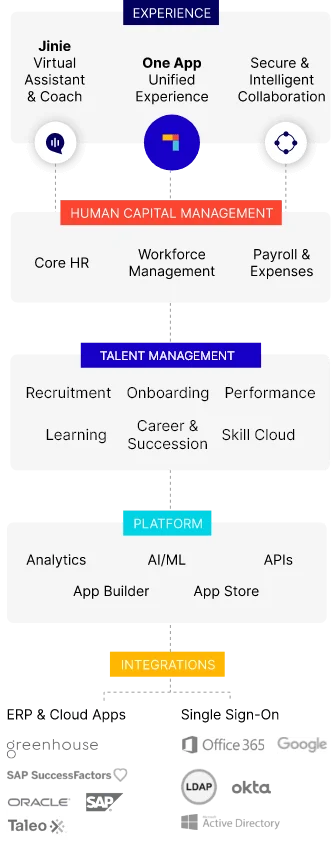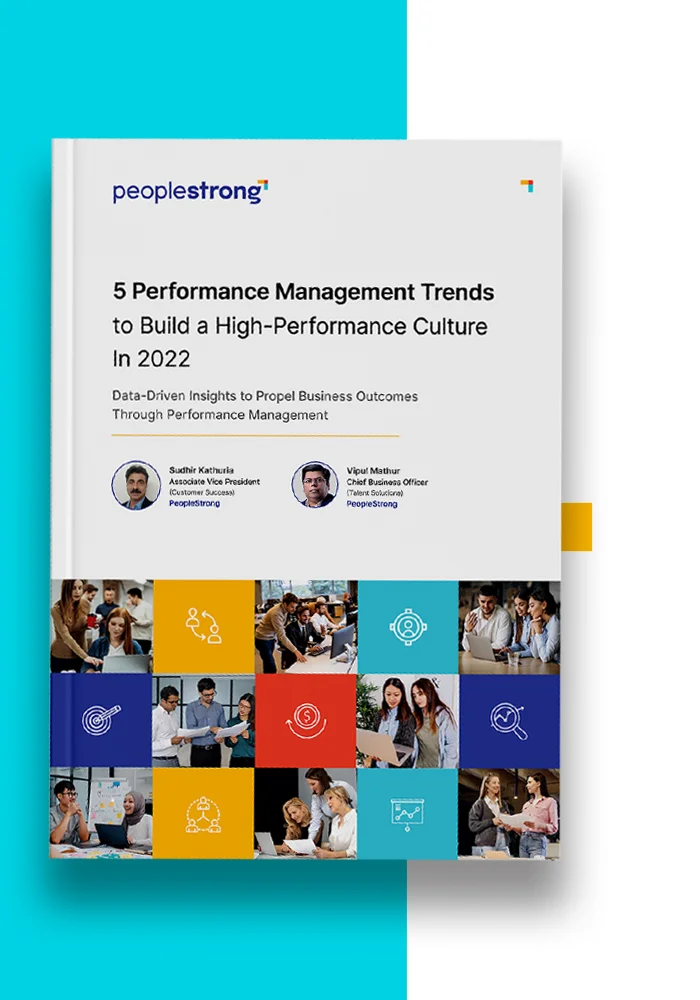About 74% of the Saudi Arabian workforce and 73% of the UAE workforce prefer working in a people-centric workplace. Given how headhunters are circling your top talent every day you need your stars to stay with you and convert your average performers to unleash their potential. This is not a direct result of how well you pay them but how they feel when they work with you and how secure and exciting their growth trajectory is with your company.
That’s why a good talent management process is essential for any company and a main area of concern for all HR professionals. People may leave for many reasons, but they stay with a particular company for years because of one reason – good talent management practices. Those devout star employees you hear of being in a company for 10-15 years giving their life’s best work to their company? That’s possible only with an evolving, comprehensive talent management strategy.
In this guide, we’ll take you through A-Z of talent management, so you know where to focus your HR process improvement efforts.
What is Talent Management?
Talent management is an overarching approach to finding, hiring, engaging, growing, learning, developing, and retaining top talent in your company.
It’s rooted in your business strategy, keeps evolving as you grow, and has a deep impact on how your company operates on a day-to-day basis. Having talent management in check helps you save costs, fuel your employees’ productivity, and secure your organization’s future with people who care about growing alongside your company.
Without a robust talent management strategy and process in your company, you won’t be able to attract strong candidates, lose the best talent to competitors, see no follow-through on your employee engagement initiatives, and face a plateau or decline in the adoption of even your best-performing ones.
Why is Talent Management Important?
According to Gallup’s 2024 global workplace study, 14% of the workforce around the world is highly engaged. 61% are not engaged and about 15% are actively disengaged.
Of these people, the highly engaged ones most likely have solid social connections in the workplace, are constantly motivated, content with their current role, and have hopes of the organization meeting their aspirations. These people are your assets. Nurture them consistently and they will have a positive effect on your company morale.
It’s the 61% of employees you need to worry about. They are on the fence about staying in your company or leaving when an opportunity presents itself. Since they’re not completely disengaged, there’s still room for you to intervene and convert them into champions of your organization with the right talent management initiatives.
They need a voice to hear their woes, help solve their problems, and shine a ray of hope on what they want to accomplish.
An increase in engagement initiatives, as part of the talent management strategy offers fulfilment, and about 81% of Saudi Arabia, and 78% of the UAE workforce prefer working in organizations offering fulfilling workplace culture, revamping your talent management efforts is sure to yield great results.
When talent is celebrated at all levels, the heartwarming changes also happen:
- You start discovering people exhibiting leadership capabilities that they didn’t before
- You witness boomerang employees
- You’re able to meet business requirements for resources, without asking for extensions
- You attract A-list talent easily, and quickly and reduce talent acquisition cost
- You see a rise in employee suggestions and innovation to steer growth
- You create dedicated and talented leaders who will futureproof your company
Why is it Difficult to Sustain and Scale Talent Management Initiatives?
The following common problems come up if you want to make talent management a part of your culture, and not stop at carrying out occasional engagement initiatives.
Managers and employees don’t think these initiatives are important to daily work. A culture of entitlement in the organization grows, and is assumed that top-performing employees don’t need anything further to grow. Adds to HR’s workload. Managers and decision-makers don’t know how to use the data for managing people.
Talent management tools and processes may not meet day-to-day challenges can be too theoretical, and lead to a lack of transparency and accountability in evaluation. On the other hand, you may also be led to think all employees are performing well if the overall talent management strategy isn’t executed properly.
How to Implement the Talent Management Process?
Source and Attract the Right Talent
1. Make note of traits you want in your ‘ideal employee’
Craft employee personas you want to work with and those who know will be successful in the future, as you grow, to help you hone in on what exactly each role and designation should do.
These are people you want to have more of and the kind you desire to attract to your company. Study them if you have this type of person working for you already, and determine what makes them successful in their job.
When this process is done for all roles and departments, you’ll have a set of functional, behavioral, and cross-functional competencies, skills, and desired behavior you want in the employees who will fill those roles. These are your ideal candidates, and this is where your recruitment plan starts.
2. Hire employees who value the same things you do
Given that you have everything intact to scout for your future stars, find sources that have direct access to these target candidates – agencies, headhunters, educational institutions, forums, communities, etc, and position yourself as the right person they should invest their future in. When you spot the right people for you, and offer the life they want and desire, you have a solid chance of gaining their trust.
In all your interactions with these candidates, check to what extent they display the core values you’re looking for in your star candidate – in terms of professionalism, punctuality, and quality of work (if you had them complete an assignment), tenacity to get what they want and honesty.
Most interviews go one of two ways – either the candidate paints a rosy picture of their career so far to impress the interviewer, or take the passive route and only answer the questions the interviewer puts across without any initiative on their end. Both these scenarios don’t bode well for your company.
Instead of making an interview a chance for them to prove their worth, make it an opportunity where two people (one with the demand for talent and one with the supply) have a genuine conversation on what each of them wants, and to see if their needs fit together like a puzzle. Relieving the candidate’s pressure to impress helps them open up genuinely, and gives you a chance to see if they’re actually a good fit, instead of taking a gamble and waiting for them to perform.
Suggested Read: Detailed Middle East Recruitment Process Guide for HRs
Bring Organizational Goals and Individual Goals to the Same Page
3. Show how employees’ performance is tied to the company’s performance
Create an effective onboarding process, that inducts the new hire into your organization while promising a strong support system for them to work and grow. Link the connection of the employee’s responsibilities to your organization’s big picture, thus securing their buy-in, and trust and instilling a strong sense of purpose in them, to contribute to the best of their abilities.
4. Reward employees for showcasing desired behavior
Most organizations only want their employees to meet their targets, but growth is beyond just that.
It means caring for one another and making sure that the means to the goal is as important as the goal itself. Measure instances where your employees show camaraderie, trustworthiness, team spirit, etc, and offer public appreciation for any instance of expected behavior. For example, if they stay up late, well beyond working hours to help their teammate finish their presentation, or even when they already had a hectic week, they stayed up late training the intern and supervising them, show appreciation, and make it a habit to recognize instances like these in public.
Develop employees for the better, and do it consistently
6. Create opportunities for employees to stay motivated
Keeping people happy and motivated is the toughest job, of not only HR managers but people managers too. How do you ensure they stay motivated and align their priorities with yours?
Every employee needs to have a healthy balance of 5 components to be engaged in their job – environment, relationship, support, growth, and compensation. When all these aspects are consistently fulfilled, the employee is more than likely to stay committed to the organization, and actively decline recruiting calls from competitors.
Make sure every one of your employees enjoys all these five components of engagement. Sometimes, due to business priorities, leaders tend to focus all their attention on a few departments, and high performers and may forget that the other teams and employees are integral cogs in the machine.
This can lead to major falling out if not fixed in time. But, if you roll out proactive measures that keep running quarter after quarter without any intervention, you don’t have to worry about anyone being stagnated at any point.
7. Present challenging projects that make room for growth
The Emirtization survey by PwC says, “59% of Emiratis in the UAE private sector believe career growth and compensation is important in their careers.”
Everyone wants to advance in their career, regardless of which position they’re in. If they’re incubated in the right environment, they sprout their wings and fly without anything holding them from exploring their talent.
With the right support, challenging projects will bring out the best in your people. There will be initial friction when anyone enters a new role, especially after being an exceptional individual contributor and moving on to be a manager. When employees are constantly supported, coached, and mentored by their managers through the hoops they go through in the initial phases, they will tap into their potential for you. It quickly turns into engagement, improved collaboration, connection, idea sharing, and psychological safety.
Comparing performance with potential
8. Compare employees’ performance vs potential
The 2023 Emirtization survey by PwC says, “There is a need to invest in future skills to prepare young Emiratis for the future of work and develop the next generation of leaders who can drive the UAE’s transformation into a green, digital, and knowledge-based economy.”
Performance comprises a variety of factors – employee behavior, how well they lead, manage, collaborate, and set standards for other team members, to what standards they hold their work, how committed are they to your company values, and how well they achieve targets and critical objectives.
An extension of the 9-box grid, the following important types of categories of employees are to be considered carefully, to make or break your organization’s future.
Not everyone wants to climb the corporate ladder instantly. Depending on their potential, current performance, and organizational needs, you figure out how to proceed. It’s an entirely evidence-based discussion.

9. Give and receive feedback regularly, and in the right way
Traditional one-time performance reviews are gradually fading away as companies adopt more agile approaches, such as quarterly or semi-annual reviews. Regular feedback sessions, both formal and informal, and timely course corrections are essential to keeping employees engaged and performing at their best.
Humans inherently need to feel seen and heard, and have a sense of belonging. Frequent feedback meetings help fulfill these needs, reassuring employees that they have a robust support system to rely on. Gallup survey says 84% of employees who receive feedback on the go (fast feedback) are highly engaged, and 19% of employees who didn’t receive any feedback whatsoever are actively disengaged.
Fuel continuous employee growth and development
Zubin Zack, Managing Director of the IMEA region of OC Tanner says in their 2024 Culture Report, “91% of the workforce in the IMEA view skill building as a vital factor in evaluating if a job is right for them.”
10. Prepare personalized development plans for every employee in the company
Most performance reviews end with a monetary enhancement, a promotion, or both, but often don’t follow up on developmental goals.
Identify the growth pattern each key role has to take, to cater to the organization better. Develop a professional development dialogue with your employees – wherein you ask them what their aspirations and perceived strengths are, how they’d like to grow, and what line of work interests them. Have people managers have this dialogue with their reports in every review meeting (quarterly, or half yearly). Assess where the employee is personally, and what type of growth track they want to take. Not everyone wants the same track.
Some want to become a manager, and climb up, while some others want to remain a masterful individual contributor. Without taking this preference into account if plans are made, people get promoted to managerial roles, and end up struggling to cope with the challenges the role poses.
Get answers to these questions and carve out the growth trajectory for each band and grade. The next thing to do is to identify learning goals, so you can carve out their development plan. Doing so, you’ll also cater to the succession planning for your organization.
Ensure respectful exits
An employee leaving doesn’t mean the organization should burn bridges with them. They are assets who have worked for you, and they can still yield good returns for you by sending good talent your way, helping you out with referrals, and spreading goodwill they hold for you if the organization treats them right on their way out.
How to Create a Talent Management Strategy Step-by-Step?
The most important question the talent management team needs to ask and the answer is, “Who are your most talented employees and what do you do with them?”. Developing a talent strategy based on your employee persona, and crafting talent management processes with your strategy as the base would help you answer that question correctly.
1. Need analysis/pulse check
Conduct surveys and quick pulse checks to gauge your employees’ feelings. It’s crucial for people to feel they are working towards their personal vision. By understanding what is important to them, you demonstrate that the company truly cares about their well-being and aspirations.
2. Evaluate your current HR processes
From the survey results, find the #1 unmet need for your employees and make it your priority to build the particular aspect of employee experience from there. Assess the impact your current human resource process is creating, and compare it with the desired benchmark. For example, if you have a 1-way performance review right now and your employees say they don’t feel like their voice is heard, consider bringing in 360-degree feedback, or at least a 2-way review, so the employee gets a chance to voice out their concerns.
3. Create a strong employer brand
An employer brand is closely linked to your EVP and how employees feel about being associated with you. Improve your brand presence by showcasing what existing employees feel about your organization.
It can be in terms of ‘A day in the life of…’ videos and posts on social media, showing how you work, work-life and benefits you offer, your culture, etc, and heavily on what your employees share about your company on social media. Instead of making it mandatory, make the rewards and employee experience exhilarating so that employees want to show off what they have with them to the world.
4. Nurture your employees holistically
Stephen Covey says when we draw points from the emotional bank account, and never put in any points in it, people feel bankrupt. We need to put it in and acknowledge people for what they’re doing right. This is why recognition and growth are important, at all phases of the employee lifecycle. It’s not about plugging in wellbeing or engagement initiatives once in a while during the lean season.
The OC Tanner 2024 Global Culture Report says that the current engagement level is 78% in Saudi Arabia and 77% in the UAE.
It’s about treating engagement as important as work and planning work around it. They go hand in hand, and your engagement calendar is planned in advance, so nothing goes amiss. Make nurturing and growth a part of your culture, so people know it’s not a one-time thing, and the future of talent management of your company is insured.
How Can PeopleStrong Help?
Given how critical the talent management function is, you need a team of seasoned experts to help you brainstorm HR process improvement, visualize the ideal employee lifecycle you want to create for your workforce, and show you the infinite possibilities you can have with the help of technology.
PeopleStrong will help you ideate with experts by your side, and bring in the A-team to carry out the end-to-end agile implementation of our talent management software in a short while, without any operational disruption, so you can seamlessly transition from your existing talent management process to the next level with no friction, while also future-proofing it with AI.
Contact us today, to schedule a free demo and get a headstart on your talent management initiative.














